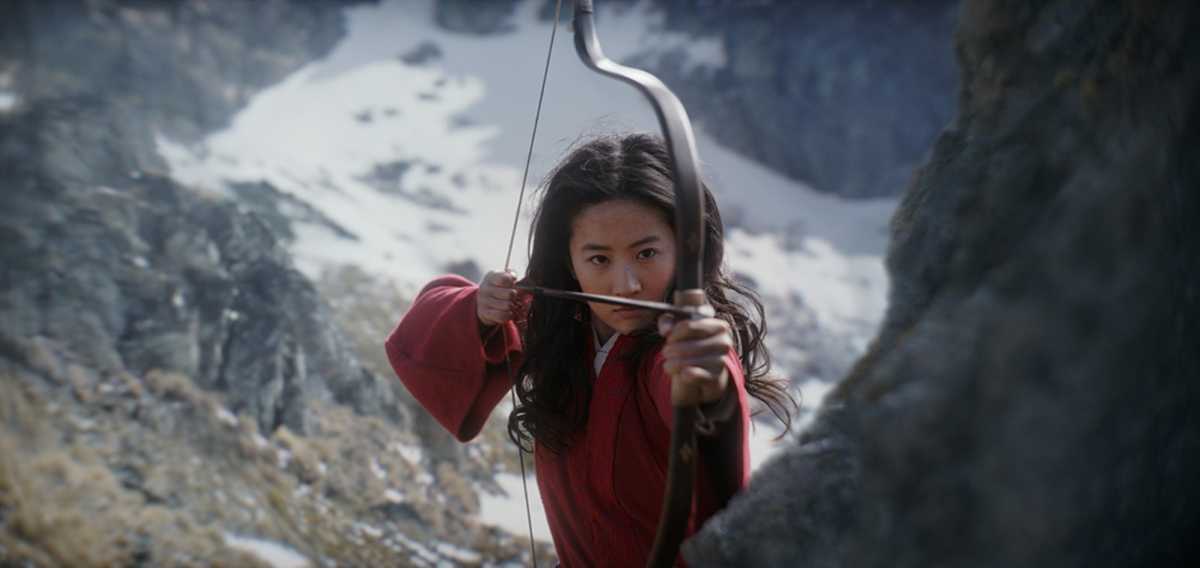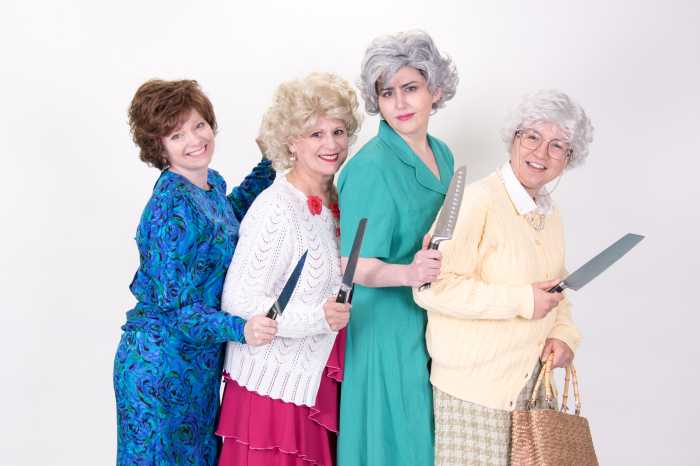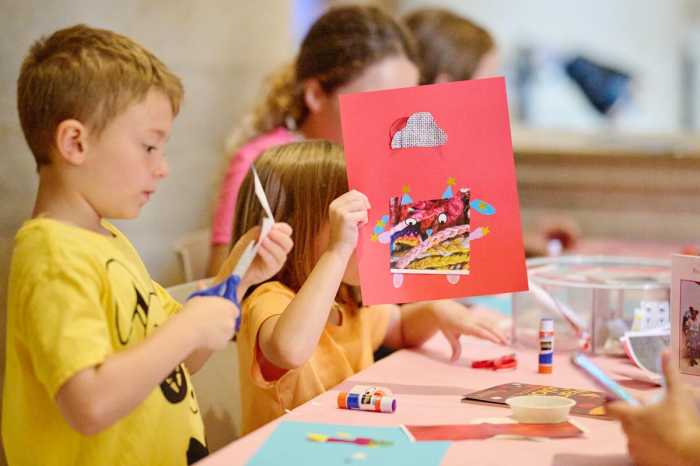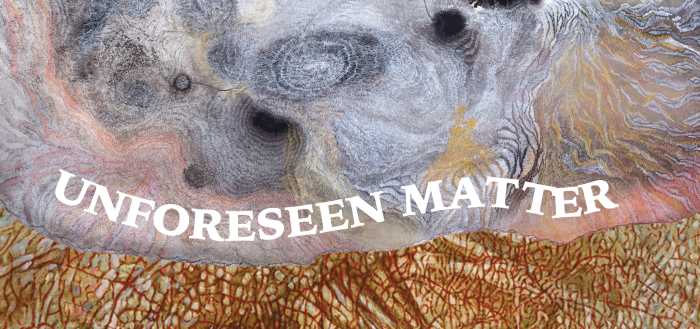By Luz Lancheros, MWN
“Mulan” (1998) was a film that marked several generations. For the first time in Disney’s history, there was no singing and dancing princess with little birds around. This young Chinese woman sang, yes, but she also put on her sword to fight for her father and save Imperial China in an epic journey with fantastic feats that consecrated her as a new female character who opened the way for warriors like Merida in “Brave.” That is why Disney’s work in recreating the history of the Chinese warrior in live-action was immense, more so with the millenary richness of an empire and with all the preciousness of its traditions and cinematographic history. Especially with a genre that has been recognized even in Hollywood for its aesthetic beauty and craftsmanship – Wuxia – which mixes a historical context, aesthetic beauty, epic legends and martial arts.
Bina Daigeler was in charge of the titanic task of reconstructing Imperial China and this millenary legend. These were the keys to give Mulan, with her costumes, the legendary tone that characterizes her.
China through colors
With so much tradition and splendor, with so many millennia of history, Daigeler had to document Chinese history, especially when it came to showing his vision through color.
“Every color has a function. For example, yellow at that time in China was reserved for the emperor. And black means something, and red means something else. We did extensive research to find out what each color means; and where to use this or that color or how to use it. After that, wanting the costumes to be fresh, positive and optimistic, I went to a huge workshop with different departments in charge of the fabrics and of ‘breaking down’ the garments. They did a wonderful dyeing job. I bought many natural fabrics which we dyed in different ranges of yellows, reds and blues,” the costume designer explained.
A tribute through rigor
This clearly extended to the details of the armor and costumes. Daigeler had to go beyond color and understand the intentionality of each ornament and piece. To pay homage to a culture and a country that preserves it like almost no other in the world:
“As a first step it was important to go deeper into the meaning it has for China, because we were all interested in doing it well, remembering, that it is a folkloric tale that has been passed down through the centuries. But my costumes are based on my historical research, and I also traveled around China, visited the main museums and bought a lot of books,” she said.
In addition, when shooting in New Zealand, Daigeler was fortunate to have space to make the costumes for the armies and other cast members. Many of them were made through 3D printing and, with a team of 40 people, they also created costumes with textures that they bought all over the world to be able to do it.
Within the production
After researching, Daigeler and director Niki Caro, as well as production designer Grant Major, communicated virtuality. The designer put together mood boards with ideas for each character and thanks to Major’s previous work, these ideas got into the development process. There are also winks to the original film:
“All these costumes are much more elaborate than in the original film, but of course I took ideas and was inspired by some small things like using the same color. I’m sure Mulan’s fans will notice,” Daigeler said.
Bringing Mulan to life
Daigeler had already worked with the actress Liu Yifei, and she said she felt like Mulan in the village when she was 16 years old. But the work with her armor was hard:
“It was also important for me to do many tests with her armor. The workshop created several types of armor for all of the action sequences. We had her riding armor, her beautiful heroine armor, the combat armor and the armor she wears when she’s underwater. They are all made with different fabrics and different structures to suit her action sequences as she does many of her own stunts. It was really important that she could move freely so that everything was perfect and that costumes didn’t get in the way of any of the challenges she had to face,” the designer explained.
Characterizing the stars of Wuxia
Donnie Yen and Jet Li, legends of martial arts, movies and the Wuxia genre (both were stars of the beautiful “Hero”, 2002) play the Tung commander and the Emperor respectively. They had to be given majesty and dignity. In the case of Tung, Daigeler devised “a design based on an old piece of armor that I saw, which had the pattern of a dragon. I included this design as part of the armor,” she said. “The rest of the armor is based on animal figures that they had in the Tang Dynasty. So all of Tung’s armor is based on that Tang Dynasty animal print. Donnie Yen was fascinated by it. To him, it made him look strong and powerful.”
On the other hand, the designer wanted to reflect the power of the emperor of China, especially in his throne room suits. She traveled to Singapore to do the first test with Jet Li and the result was more than satisfactory.
“His daughters were there and approved all of them, and were fascinated to see him as the Emperor of Mulan. They really loved that. I think his armor is imposing, and I’m very happy with how he looks in his full armor. It’s all embroidered and sewn by hand. It’s really impressive to see his definitive look,” she added.
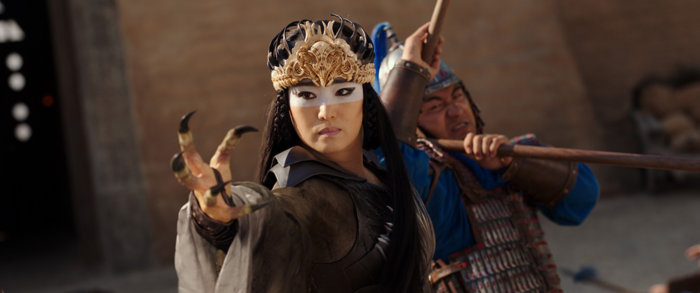
Gong Li and Jason Scott Lee: new villains
In the animated film, there was a leader who could well represent the Mongols or the Huns. This time, there is a witch who wants to put the Chinese empire in check, Xianniang, played by one of the best Chinese actresses Gong Li. For this reason, her costumes had to emulate the strength of her character:
“We went from one design to another, but after the first costume test with Gong Li, she gave us her opinion and detailed how she would approach her character. We found the turn and the direction in which we wanted to go. Her costumes were extremely laborious because they were all hand-stitched and made of leather, and we had to make sure she could move well in them,” Daigeler said.
He also had to work hard with Böri Khan and develop the character from his appearance.
“I first designed the Rouran warriors. Once that was defined, I made design boards for Khan and worked with Niki to achieve the look we wanted. She wanted him to have clear, defined lines, and I wanted the whole suit to move with him when he was riding or in action. We used black leather for his design and many textures. Once Jason Scott Lee tried on the suits, everything took shape. He was just the right person and, with the suit, it was suddenly like, ‘Oh my gosh!… Here’s Böri Khan.’ Then, with the make-up that Denise Kum did, he looked incredible. I think it’s really extraordinary to see how everything works together,” the designer concluded.



